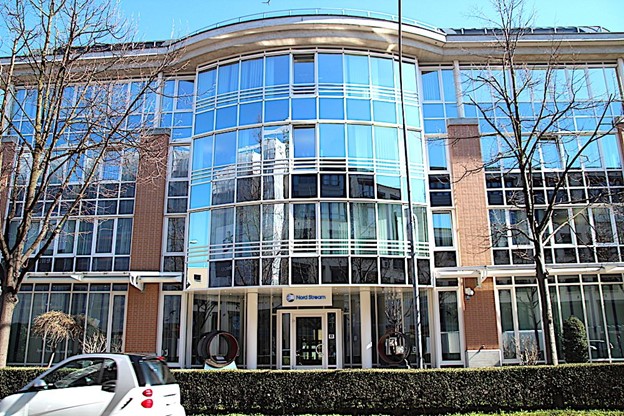

Author: Kent Moors, Ph.D.
I thought this Classified Intelligence Brief was an appropriate time to fill readers in on particulars surrounding my career, especially since such a Spy Tale as this one requires some explanation of how I did what. It is also somewhat involved. That ended up making it a two-parter.
By the first decade of this century my visibility in global energy matters was established and moved me into the last stage of a multicarrier life. It also prompted some rethinking of what additional ad hoc situations I might handle in my intel career.
At some point, I expect to explain the appointment I held for over three decades of active service and as an advisor thereafter. Despite the agreement reached recently in which I am largely free of heavy-handed vetting by “mother,” the origin of my post-Vietnam intel career, the specific internal unit into which I was recruited, the particulars and range of my duties, the actors responsible for bringing me in, the leverage provided, and why much of the activity remains classified are all untouchable. It was unusual to say the least and could involve some responsibilities now and then “off the books.”
However, as follows below, I can still comment on some of the specifics in this and later Spy Tale installments.
I was normally under the direction of the Chief of Station (COS) wherever I was or under Langley when at home. The latter usually involved less direct action since the Agency is enjoined from conducting operations inside the US unless provided specific emergency authorization. Aside from what Hollywood wants you to believe (and some unsavory infrequent actual events in the past), this domestic restriction is assiduously followed.
Nonetheless, operational requirements sometimes would require that I bypass the normal chain of command. I had a similar experience evading the higher ups in the Vietnam War theater (see “A Giving of Accounts…from Massachusetts to Vietnam,” Classified Intelligence Brief, February 17, 2021). On both occasions, it engendered some push back “in the ranks.” There, one confronted careerism and promotion interests, neither of interest to me nor likely to be an issue anyway. After all, personally this was never about making friends, playing politics, or moving up the professional food chain.
By the time of this Spy Tale entry, I was once again ensconced back at my home US university, although an obliging administration there and a full senior professorship allowed a school year semester schedule that provided freedom to act from Wednesday through the following Monday afternoon.
Even then, if my other activities intruded, I had three graduate teaching assistants to pick up lectures in my absence. Students knew I was a government “trouble shooter,” but little else. A cartoon in an unauthorized fraternity publication even pictured me in dark glasses and my long black leather coat (which I actually owned and wore on campus) reminiscent of Morpheus in the then recent smash hit movie The Matrix. They had me swooping down on some unknown foreign adversary.
The cartoonist was a bit more accurate than he realized. Years later, as I was ending my teaching career, I introduced a very popular series of sophomore-to-graduate classes on intel agencies and their impact on policy and ethics. Most then understood at least the outlines.
The reality meant that for years thereafter I was burning up the frequent flyer miles to London often twice a month for long “professional weekends” plying my other trade. There I would continue to use the base I had set up years earlier at the London School of Economics and Political Science (LSE).
But the “other job” on both sides of the pond had changed significantly.
It is affectionately called “TDY” (Temporary Duty Station) in other circles. However, my short-term assignments elsewhere involved a very different arrangement. I had been subject to what was called “72-hour notice” before but had not thought it would last as long as it did. It simply stipulated that I had to be available for “exceptional assignment” having no more than a three-day forward deployment window. This now became the structure of my life.
These operations would comprise the bulk of my intel work. Technically, I would be assigned to some government agency on TDY for budgetary purposes. But if the operation lasted more than 28 days, I would be transferred to a “new” temporary assignment contract with another government entity. That way, the contractual merry go round would shield the salary, expense per diem, and contract specifics from Congressional review.
Make no mistake. I was always ready to defend the American democratic system’s checks and balances. I just would prefer not to become an exposed public political football while I was vulnerable in the field.
One multi-decade downside of this arrangement. Given the dictates of what amounted to serving as contracted personnel, I was never eligible for government benefits nor pension. Not even today as I write this.
Wait, there was one exception. I was recently allowed to become a member of the Central Intelligence Retirees Association. Even received a framed certificate and a coffee mug to prove it. That occurred once I exceeded the maximum age at which I could be involuntarily recalled to an active assignment (when one can finally use the intel equivalent of Danny Glover’s unforgettable line in the Lethal Weapon movies: “I’m too old for this sh*t.”).
But my unusual employment made for some interesting times on more than one continent. That’s because I was expected to move from wherever I found myself. During the academic year, it would on occasion mean that I was literally pulled out of a lecture hall, thrown a briefing packet, and put on a government Gulfstream to some foreign shore.
As a result, for years I would literally carry a suitcase wherever I went and would update the duty officer at Langley (DO/HQL) of where I was and a method of direct contact. Marina, on the other hand, had her own “several days’ notice” approach. She would rarely pack more than six days of clothing. She figured that I would either finish whatever I had to do within a week, or so tee off others that they would send me home.
As it turned out over the years, it ended up being six of one, half a dozen of the other.
Anyway, all of this background puts me commuting between East Coast US and London when the following occurs.
I had given a presentation at a bilateral policy conference in Frankfurt, Germany a few weeks before the assignment was cut. The meeting there had involved ways to track proceeds from global commodities sales when the books don’t match. For example, a national oil company or one considered private for equity purposes but controlled by a central government would declare one volume of sales on its end of the transaction, but the consignment would end up a bit “heavy” on the other.
I used Frankfurt as an opportunity to process updates and debrief sources. There was intel strongly suggesting more Russian oil or natural gas transited than was covered by export contracts. I had previously tracked significant moves of unrecorded funds out of the USSR during the coup attempt of 1991 and thereafter (see “Tracking Soviet Coup ‘Proceeds’ in Europe,” Classified Intelligence Brief , August 5, 2021).
As I noted in that earlier CIB, initial estimates totaled at least $30 billion had been siphoned out of the USSR collateralized via Soviet export commodities (oil, natural gas, metals, timber, gold) held in trading houses either created by Soviet parties or effectively controlled by them. In virtually all cases, this emerged as doctored commodity contracts.
So, the use of hydrocarbons to move undocumented funds was hardly new to me. However, this time there were other considerations. First off, this was now taking place in a different environment. Russia was in a post-crisis phase (at least politically). Vladimir Putin was in the third of his five terms as president: the first in an acting capacity when Boris Yeltsin resigned from office on December 31,1999; the other four elected (2000, 2004, 2012, 2020). He introduced some domestic stability using a tool Russians knew well – an iron fist.
Second, while the economic situation was still a problem, there was no longer the widespread public fear in Russia of a market implosion.
Third, what we were finding was a more nuanced transfer of funds with a deliberate attempt to support Kremlin foreign policy objectives rather than simply those in power squirreling money away abroad.
Finally, this time the tool was natural gas contracts almost exclusively. That brought into the crosshairs an institution with which I would have a close interest for some time thereafter. It also obliged that I hightail it back to London not long after returning to the States from Frankfurt.
Then as now Russian export natural gas contracts came from Gazprom, the largest company in Russia and the largest natural gas concern in the world. While Gazprom stock was (and is today) traded publicly on the Moscow Stock Exchange and, via depository receipts and depository certificates, elsewhere in the world, the Russian government completely controlled the company.
It was not unusual for the Kremlin to use Gazprom and its gas as direct (and sometimes heavy handed) tools of its global foreign policy. Upon occasion, the company would telegraph to world markets what the officials back home either could not or would not declare openly.
“Gazprom watching,” therefore, went beyond simply energy matters.
Contacts among European-based secondary energy traders provided us with the initial word that something unusual was emerging. Gazprom’s export gas contracts were being “paired” with equipment, consultancy, technology, and personnel exchange agreements coming in the opposite direction in quite unusual ways.
First, these “twins” on paper were moving into regions where there were no ongoing projects to justify them.
Second, the gas volume moved was once again larger than the contract specified.
Third, the considerations that were supposed to be coming in the opposite direction rarely actually arrived.
Strange, Gazprom appeared to be sending gas without full payment while at the same time paying for services and material it never received. Made no sense for a company to act this way, even if it was Russian and had big brothers back home to pay its suspect bills.
What made all of this even more unusual was the size. These contracts were expanding. Now Gazprom would run contracts through major trading companies based in Europe (primarily Switzerland, the Netherlands, and Italy) in which Russia directly or indirectly had a heavy ownership interest. These traders would become the party of record for the hard currency transfer of gas to the contract’s end client.
The arrangement would also allow Moscow to receive revenue both from the initial contract agreement and from the network of secondary sales. If there is more volume actually available than the contract specifies (if, in other words, Russia is moving additional “shadow” gas out to generate under the table proceeds for other purposes), Gazprom’s central trading arm located in Zug, Switzerland would send out the availability and tender specifics.
That entity just happens to be in the same building that would later house the Nord Stream natural gas pipeline projects between Russia and Northern Germany via the Baltic.


Main contracts for Russian natural gas take place under detailed provisions with the actual price rarely made public. Basic provisions require a multi-year commitment (usually 20), include a take-or-pay clause (the partner must take at minimum a certain amount per month, often 70 percent of the monthly contracted amount, or pay as if it had), and have a price based upon a basket of crude oil and refined oil products that is revised periodically (usually quarterly).
Secondary sales, however, are on the spot market. These are designed to occur quickly and at prices than can be quite different from the longer contracts. If these trades occur during periods of unusual demand or supply constrictions (such as the condition facing Europe today in mid-October 2021), they can be for a price higher than the main contract arrangement. On the other hand, normal secondary/spot sales are at a discount to the main contract price.
What was piquing interest was twofold. The excess volume appearing was much greater than normal. And the prices agreed to by Gazprom’s sales agents were at steep discount to both the main export contracts and what the spot market would expect.
For some reason Russia wanted the money very quickly, obliging Gazprom to accept significantly lower proceeds per sale than market watchers anticipated. A rising amount of those funds were moved to another Gazprom location, a place I knew well and would follow for many years.
Zug may control Gazprom sales abroad. But the essential prefinance of deals comes from Gazprom Marketing & Trade (GM&T). With other offices in Paris, Singapore, Manchester (UK), Hertogenbosch (the Netherlands),and Houston, GM&T is headquartered in this London building.


This is how the Kremlin would control the flow of excess gas sales. When it comes to exports, the pecking order is this: Gazprom controls 100 percent owned Moscow-based Gazprom Export. Gazprom Export controls Berlin-based Gazprom Germania GmbH, which in turn controls the entity that actually does the pre-financing in foreign markets – GM&T.
The above building is in Regent’s Place, close by one of my favorite London Italian eateries (Giovanni Rana), Regent’s Park, a short walk from my old haunts at the British Museum (the location of my first postdoctoral research post in London) and a direct Underground ride from where I used to live in South Kensington.
The interest really took off when tracing of the funds from shadow gas sales on the spot market began passing through GM&T in London, then to a network of financial houses in “The City” (London’s financial district), and onward to foreign locations.
This was quickly becoming much more than officials back in Moscow feathering their nests. Something else was afoot. And some of it was touching close to home.
Because a portion of the money had been transferred to Texas.
We pick up here next time.


Dr. Kent Moors
This is an installment of Classified Intelligence Brief, your guide to what’s really happening behind the headlines… and how to profit from it. Dr. Kent Moors served the United States for 30 years as one of the most highly decorated intelligence operatives alive today (including THREE Presidential commendations).
After moving through the inner circles of royalty, oligarchs, billionaires, and the uber-rich, he discovered some of the most important secrets regarding finance, geo-politics, and business. As a result, he built one of the most impressive rolodexes in the world. His insights and network of contacts took him from a Vietnam veteran to becoming one of the globe’s most sought after consultants, with clients including six of the largest energy companies and the United States government.
Now, Dr. Moors is sharing his proprietary research every week…knowledge filtered through his decades as an internationally recognized professor and scholar, intelligence operative, business consultant, investor, and geo-political “troubleshooter.” This publication is designed to give you an insider’s view of what is really happening on the geo-political stage.
You can sign up for FREE to Classified Intelligence Brief and begin receiving insights from Dr. Moors and his team immediately.
Just click here – https://classifiedintelligencebrief.com/






